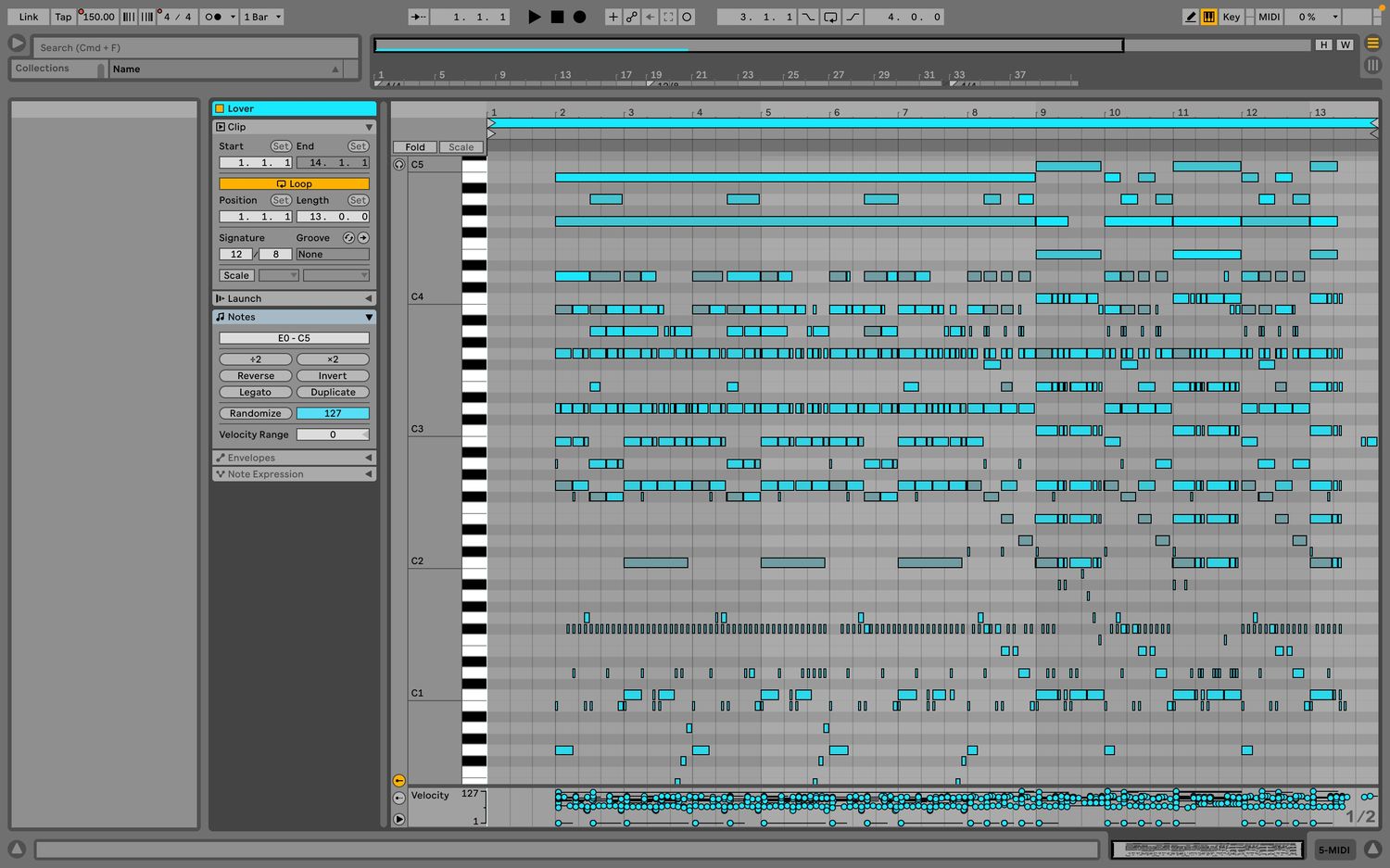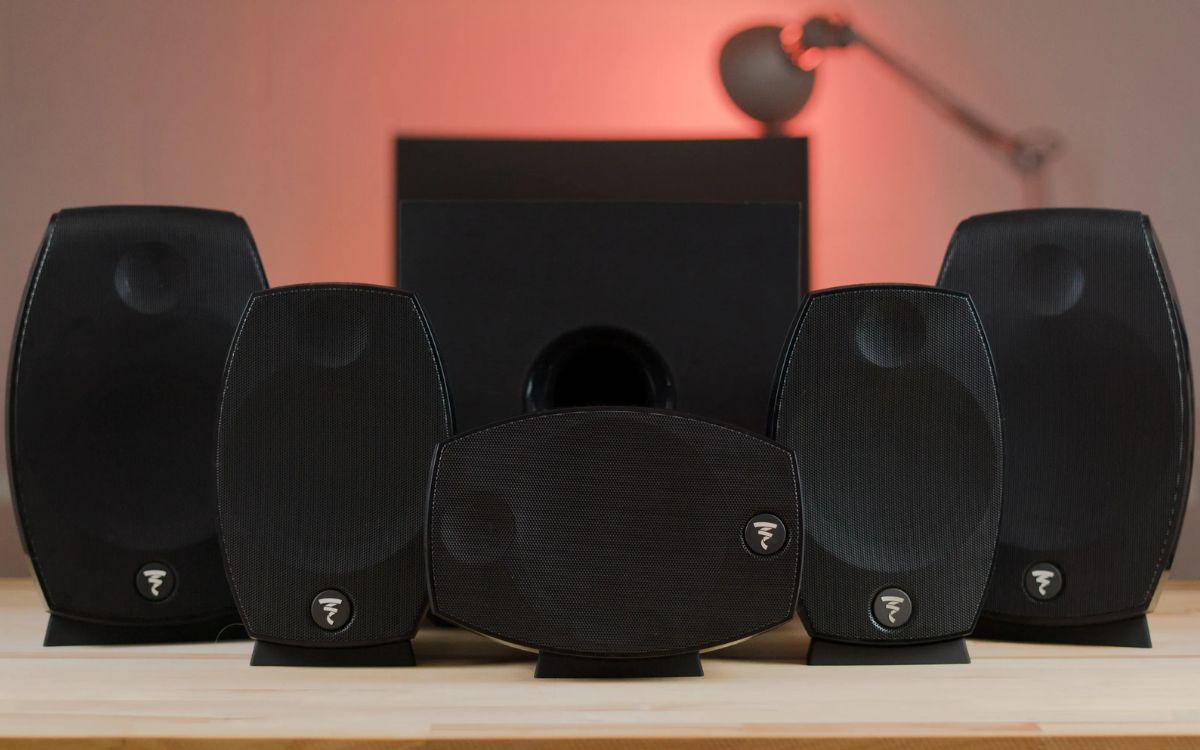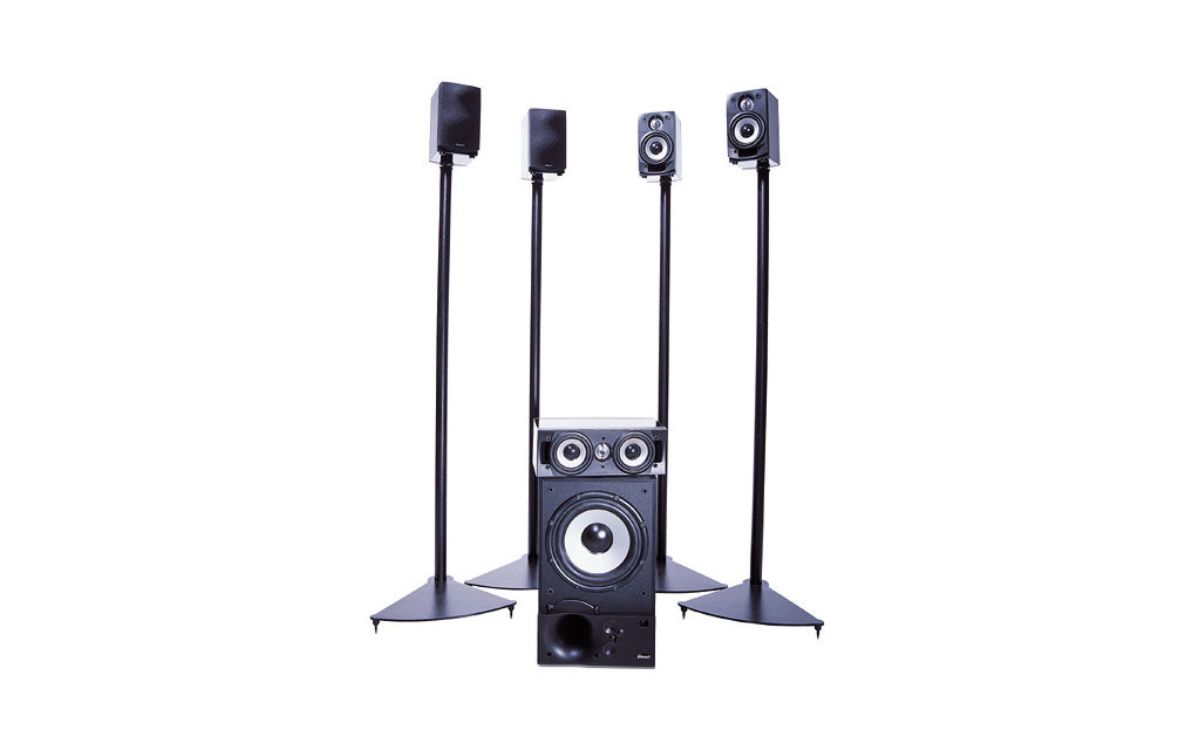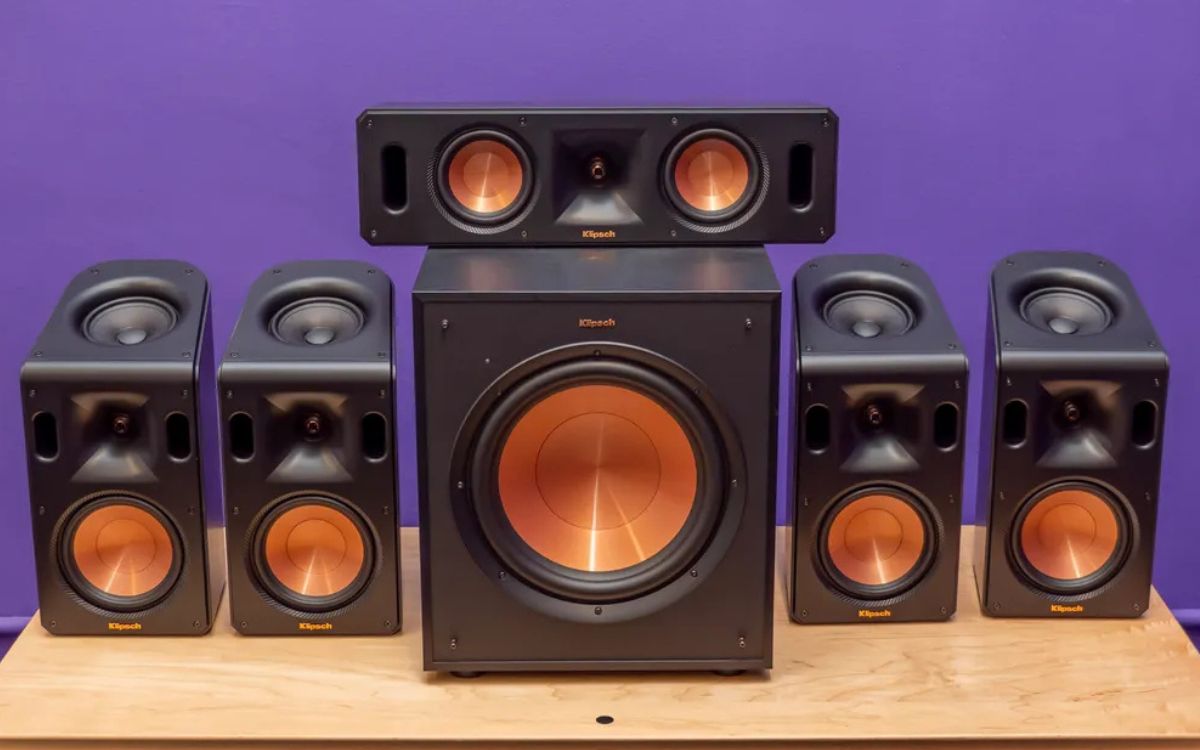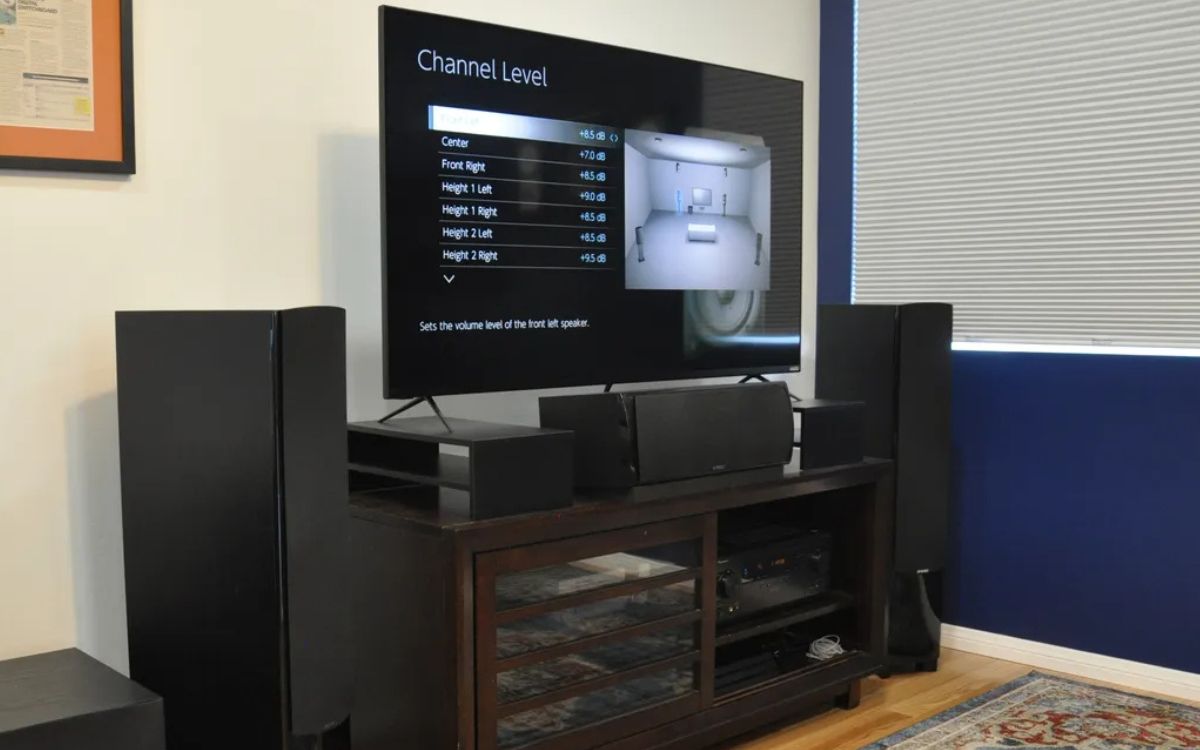Home>Production & Technology>Surround Sound>What Is The Best Surround Sound Format


Surround Sound
What Is The Best Surround Sound Format
Modified: January 22, 2024
Looking for the best surround sound format? Discover the ideal choice for immersive audio experiences and elevate your entertainment.
(Many of the links in this article redirect to a specific reviewed product. Your purchase of these products through affiliate links helps to generate commission for AudioLover.com, at no extra cost. Learn more)
Table of Contents
Introduction
When it comes to immersing yourself in a truly cinematic audio experience, nothing beats surround sound. From explosive action sequences to subtle background ambiance, surround sound technology adds a whole new dimension to your entertainment. But with different surround sound formats available on the market, it can be challenging to determine which one is the best fit for your needs.
In this article, we will explore the various surround sound formats, their features, and discuss which one might be the ideal choice for you. Whether you are a dedicated movie enthusiast, an avid gamer, or simply someone who appreciates high-quality audio, understanding these formats will help you make an informed decision and level up your audio experience.
But before diving into the specifics of different surround sound formats, let’s first take a closer look at stereo sound – the foundation on which surround sound is built.
Stereo Sound
Stereo sound, also known as two-channel audio, has been the standard in home and professional audio for several decades. It consists of two speakers – a left and a right – which deliver separate audio channels to create a sense of depth and width in the soundstage. By panning audio elements between the left and right speakers, stereo sound is able to create a basic form of spatial audio.
While stereo sound is a significant improvement over monaural sound (a single audio channel), it lacks the immersive experience that surround sound provides. This is where surround sound formats come into play, offering a more lifelike and captivating audio experience.
Stereo Sound
Stereo sound, also known as two-channel audio, has been the standard in home and professional audio for several decades. It consists of two speakers – a left and a right – which deliver separate audio channels to create a sense of depth and width in the soundstage. By panning audio elements between the left and right speakers, stereo sound is able to create a basic form of spatial audio.
With stereo sound, the listener can perceive the separation of sound sources, giving a more realistic and immersive experience compared to monaural sound. For example, if you are listening to a piece of orchestral music, the violins may be positioned more towards the right speaker, while the cellos and double basses may be more centered. This positioning allows the listener to distinguish between different instruments and appreciate the composition in a more nuanced way.
Moreover, stereo sound provides a sense of width or “soundstage.” Imagine watching a movie where the dialogue comes from the center speaker, while the sound effects extend to the left and right speakers. This spatial separation enhances the overall audio experience and makes it feel like you are in the middle of the action.
While stereo sound is a significant improvement over monaural sound (a single audio channel), it does have some limitations. The main drawback is the lack of a true surround sound experience. With only two speakers, stereo sound cannot reproduce the sophisticated audio positioning and directionality that can be achieved with a multi-speaker setup.
However, stereo sound remains a popular choice for many applications, including music listening, podcasts, and basic multimedia content. It is simple, affordable, and widely compatible with various audio devices. Plus, most audio recordings, both old and new, are mixed for stereo playback, ensuring a seamless listening experience for stereo enthusiasts.
In summary, stereo sound is the foundation of audio reproduction and has been a staple in the industry for decades. While it cannot provide the immersive experience of surround sound, it still offers a remarkable audio experience with its spatial separation and wide soundstage.
Surround Sound Formats
Surround sound formats take the audio experience to the next level by utilizing multiple speakers placed strategically around the listener. These formats aim to recreate a more realistic and immersive audio environment by simulating the way sound travels in real life. Here are some of the most popular surround sound formats:
Dolby Digital
Dolby Digital, also known as AC-3, is one of the most widely used and recognized surround sound formats. It is commonly found in DVDs, Blu-ray discs, streaming platforms, and cinema sound systems. Dolby Digital delivers up to 5.1 channels of high-quality audio, which includes front left, front right, center, surround left, and surround right speakers, along with a dedicated low-frequency effects (LFE) channel for deep bass. This format ensures a captivating audio experience with its precise sound positioning.
DTS (Digital Theater Systems)
DTS is another popular surround sound format that competes with Dolby Digital. It offers similar multi-channel audio capabilities, including up to 7.1 channels for a more immersive audio experience. DTS is known for its high data transfer rates, resulting in cleaner and more detailed sound reproduction. It is commonly found in movie theaters and high-end home theater systems.
Dolby Atmos
Dolby Atmos revolutionized the surround sound landscape by introducing object-based audio. Instead of relying solely on channel-based audio positioning, Dolby Atmos allows sound to be treated as individual objects that can move freely in a three-dimensional space. This format provides an even more immersive experience by incorporating overhead speakers or ceiling-mounted speakers to create a sense of height and true 3D audio. Dolby Atmos is available in various configurations, from 5.1.2 (five speakers, one subwoofer, and two overhead speakers) to 9.2.4 (nine speakers, two subwoofers, and four overhead speakers).
Auro-3D
Auro-3D is another object-based surround sound format that aims to provide a natural and immersive audio experience. It takes a slightly different approach by adding height channels above the listener, creating a three-layer sonic landscape – the traditional surround channels, the height channels, and the top channels. Auro-3D works with standard 5.1 and 7.1 setups, as well as more advanced configurations like 13.1 and 15.1, delivering a truly multidimensional soundstage.
These are just a few examples of popular surround sound formats. Each format offers its unique features, benefits, and speaker configurations. The choice of format ultimately depends on personal preferences, equipment compatibility, and the content available in that format.
Dolby Digital
Dolby Digital, also known as AC-3, is one of the most widely used and recognized surround sound formats in the entertainment industry. It is a standard audio coding format developed by Dolby Laboratories, designed to deliver high-quality audio in multiple channels for a captivating home theater experience.
Dolby Digital supports up to 5.1 channels of audio, including front left, front right, center, surround left, and surround right speakers, along with a dedicated low-frequency effects (LFE) channel for deep bass. This configuration creates an immersive soundstage, where audio elements can be precisely positioned, giving the listener a sense of directionality and spatial awareness.
One of the key advantages of Dolby Digital is its widespread compatibility. It is commonly found in DVDs, Blu-ray discs, streaming platforms, and many other media formats. This ensures that a vast library of content is readily available in Dolby Digital format, allowing users to enjoy a rich audio experience in the comfort of their homes.
In addition to its compatibility, Dolby Digital offers high-quality audio compression. It uses perceptual coding techniques to reduce file size without sacrificing audio quality significantly. This compression is necessary to fit the audio data on storage media or optimize streaming bandwidth, ensuring seamless playback while maintaining impressive sound fidelity.
Dolby Digital is also known for its multi-channel sound distribution capabilities. It can deliver audio to various setups, from basic 2.0 stereo systems to full-fledged 5.1 surround sound systems with multiple speakers. This flexibility allows users to tailor their audio setup based on their preferences, available space, and budget.
Furthermore, Dolby Digital includes dialogue normalization, a feature that ensures consistent volume levels across different programs and channels. This eliminates the need for constantly adjusting the volume when switching between movies, TV shows, and other content, enhancing the overall viewing experience.
In summary, Dolby Digital is a versatile and widely adopted surround sound format that offers a rich and immersive audio experience. With its compatibility, high-quality compression, multi-channel capabilities, and dialogue normalization, it continues to be a popular choice for home entertainment systems, delivering the cinematic sound quality that viewers crave.
DTS (Digital Theater Systems)
DTS, short for Digital Theater Systems, is a renowned and widely used surround sound format that competes with Dolby Digital. It is known for its high audio quality and immersive sound reproduction, making it a popular choice for movie theaters and home theater enthusiasts.
Similar to Dolby Digital, DTS supports multi-channel audio, offering up to 7.1 channels for a truly immersive audio experience. This configuration includes front left, front right, center, surround left, surround right, rear left, rear right speakers, and a dedicated low-frequency effects (LFE) channel for powerful bass. This extensive speaker setup ensures that sound is accurately positioned and delivered, enhancing the overall cinematic experience.
One of the key advantages of DTS is its high data transfer rates, which allows for more detailed and dynamic audio reproduction. By utilizing less audio compression compared to other formats, DTS is able to deliver cleaner and more nuanced sound, preserving the original audio fidelity as much as possible.
Moreover, DTS is known for its support of high-resolution audio formats, such as DTS-HD Master Audio and DTS:X. These formats provide even higher audio quality, with support for lossless audio compression and object-based audio for a more immersive soundstage.
DTS is commonly found in movie theaters around the world, as many film studios choose DTS as their preferred audio format for theatrical releases. This ensures that moviegoers can experience the film’s sound exactly as intended by the filmmakers, with detailed audio separation and powerful surround effects.
In the home theater domain, DTS is supported by a wide range of audiovisual equipment, including Blu-ray players, AV receivers, and soundbars. This compatibility makes it accessible for home users to enjoy DTS-encoded content, whether it is from physical media or streaming platforms.
It is worth noting that there may be slight differences in audio characteristics between DTS and Dolby Digital. Some listeners prefer the tighter bass response and perceived clarity offered by DTS, while others appreciate the immersive soundstage and dynamic range of Dolby Digital. Ultimately, the choice between the two formats often comes down to personal preference and the specific content being played.
In summary, DTS is a respected and widely adopted surround sound format that delivers high-quality audio and an immersive home theater experience. With its support for multi-channel audio, high data transfer rates, and compatibility with various audiovisual equipment, DTS continues to be a go-to choice for audio enthusiasts seeking an exceptional cinematic sound experience.
Dolby Atmos
Dolby Atmos is a revolutionary surround sound format that takes the audio experience to new heights. It introduces a new level of realism and immersion by implementing object-based audio technology, allowing sound to be treated as individual objects that can move freely in a three-dimensional space.
Unlike traditional channel-based systems like Dolby Digital, Dolby Atmos goes beyond the limitations of fixed audio channels and enables audio objects to be precisely positioned and moved in a 3D environment. With this format, sound can be placed not only in the traditional surround channels but also above and around the listener, creating a truly immersive soundscape.
To achieve this, Dolby Atmos systems typically consist of a combination of upward-firing speakers, ceiling-mounted speakers, or specialized Dolby Atmos-enabled speakers that can deliver audio from above. This allows for more accurate vertical positioning of sounds, enhancing the sense of height and spatial realism.
With Dolby Atmos, sound designers and filmmakers have the creative freedom to place sounds anywhere in the room, creating a more natural and lifelike audio experience. Whether it’s the subtle rustling of leaves or a thunderstorm rolling overhead, Dolby Atmos brings every detail to life, making the listener feel fully immersed in the story.
Dolby Atmos is scalable and adaptable to various speaker configurations. Common setups include 5.1.2 (five speakers, one subwoofer, and two overhead speakers), 7.1.4 (seven speakers, one subwoofer, and four overhead speakers), and even more advanced configurations for commercial theaters. This flexibility allows users to customize their system based on their specific space and budget.
Furthermore, Dolby Atmos is not limited to movie theaters and high-end home theaters. It has also made its way into consumer audio systems, soundbars, and headphones. This expansion enables users to enjoy the benefits of Dolby Atmos in a variety of settings, from their living rooms to their personal audio devices.
To fully experience Dolby Atmos, it is essential to have content encoded in Dolby Atmos format. Many movies, TV shows, and streaming platforms now offer Dolby Atmos-enabled content, enhancing the audio experience and adding a new dimension to the entertainment.
In summary, Dolby Atmos is a groundbreaking surround sound format that brings audio to life with its object-based audio technology. By allowing sound to be placed and moved in a three-dimensional space, Dolby Atmos creates a truly immersive and lifelike audio experience, delivering a new level of realism and enjoyment to home theaters and other audio setups.
Auro-3D
Auro-3D is an object-based surround sound format that aims to provide a natural and immersive audio experience. Developed by the Belgian company Auro Technologies, Auro-3D takes a unique approach by adding height channels to create a three-layer sonic landscape.
In Auro-3D, the audio setup includes traditional 5.1 or 7.1 surround sound channels, along with additional height channels placed above the listener. This configuration creates a three-dimensional soundstage, with sound coming from the front, back, and above, immersing the listener in a truly multidimensional audio experience.
One of the distinguishing features of Auro-3D is its use of height channels. These channels are dedicated to creating a sense of verticality in the audio, enhancing the overall spatial realism. By introducing height channels, Auro-3D aims to create a more accurate representation of how sound occurs in the real world, where sound can be sourced from all directions around and above the listener.
With Auro-3D, sound objects are precisely positioned in the three-dimensional space to reproduce a natural and immersive sound field. The placement of audio elements helps convey the depth, dimension, and movement of sound sources, making the listening experience more realistic and engaging.
Auro-3D offers various configurations, ranging from 9.1 (nine traditional speakers and one height channel) to more advanced setups, such as 13.1 and 15.1, adding additional height and top channels. This flexibility allows users to customize their audio systems based on their preferences, available space, and budget.
One of the advantages of Auro-3D is its compatibility with standard 5.1 and 7.1 channel setups. It can seamlessly integrate with existing surround sound systems and add the height channels without the need for additional speaker wiring or major equipment upgrades. This makes it accessible for users who want to enhance their audio experience without a complete overhaul of their setup.
Auro-3D has gained recognition in the cinema industry, with some movies being mixed and released in Auro-3D format. Additionally, Auro-3D content is available in the home entertainment market, allowing users to enjoy immersive audio in the comfort of their homes.
In summary, Auro-3D is an innovative object-based surround sound format that introduces height channels to create a three-dimensional audio experience. By accurately positioning sound objects in the vertical space, Auro-3D aims to deliver a natural and immersive listening experience that adds depth and dimension to the audio. With its compatibility, customizable configurations, and availability of content, Auro-3D offers an enticing option for those seeking to enhance their surround sound systems.
Which Surround Sound Format is the Best?
Choosing the best surround sound format ultimately depends on individual preferences, the available audio equipment, and the specific content being enjoyed. Each format offers its unique features and advantages, catering to different types of audio enthusiasts. Here are some factors to consider when determining the best surround sound format for your needs:
Audio Quality: Dolby Atmos and DTS:X are widely regarded as the top contenders when it comes to audio quality and immersive experiences. These object-based formats offer precise sound positioning and movement, creating a realistic and captivating audio environment. However, both Dolby Digital and DTS also deliver impressive audio quality and can provide a satisfying surround sound experience, especially for traditional multi-channel setups.
Content Availability: Dolby Digital and DTS are the most widely supported and commonly found surround sound formats in various media, including DVDs, Blu-rays, streaming platforms, and gaming consoles. They have extensive libraries of content, ensuring a wide range of movies, TV shows, and games are available in these formats. Dolby Atmos and Auro-3D, on the other hand, have a growing selection of content, particularly in the home entertainment market, but it may be more limited compared to Dolby Digital and DTS.
Speaker Configuration: The choice of surround sound format may also depend on the speaker setup you have or plan to have. Dolby Atmos and Auro-3D require additional height and/or overhead channels, which may not be feasible or practical in some spaces. Dolby Digital and DTS, with their traditional multi-channel configurations, can provide an immersive surround sound experience without the need for additional speakers.
Compatibility: Consider the compatibility of the surround sound format with your existing audio equipment. Dolby Digital and DTS are widely supported by various AV receivers, soundbars, and other audio devices, ensuring widespread compatibility. Dolby Atmos and Auro-3D may require specific equipment and speaker setups that support their object-based audio technology.
Budget: The cost of implementing a specific surround sound format is also an important factor to consider. Dolby Digital and DTS are generally more budget-friendly, given their widespread adoption and availability of affordable audio devices supporting these formats. Dolby Atmos and Auro-3D may require additional investment in terms of compatible equipment and speakers, which can increase the overall cost.
In the end, there is no definitive answer as to which surround sound format is the best. It all comes down to personal preferences, equipment compatibility, content availability, and budget considerations. Each format offers its unique strengths and can deliver impressive surround sound experiences. It is recommended to experience different formats firsthand in a controlled listening environment to determine which one suits your preferences and provides the most immersive and enjoyable audio experience.
Conclusion
Surround sound formats have revolutionized the way we experience audio in movies, music, and gaming. From the traditional stereo sound to the immersive Dolby Atmos and Auro-3D, each format offers its unique features and advantages. Ultimately, the best surround sound format for you depends on your preferences, equipment compatibility, content availability, and budget.
If you prefer a widely supported and compatible format with a vast library of content, Dolby Digital and DTS are excellent choices. They deliver impressive audio quality and can provide a satisfying surround sound experience using traditional multi-channel speaker setups.
If you crave a truly immersive experience with precise sound positioning and movement, Dolby Atmos and DTS:X offer object-based audio technology that creates a three-dimensional audio environment. Dolby Atmos, in particular, has gained widespread popularity and support in both cinemas and home theater setups, providing a captivating soundscape with the addition of height and overhead channels.
For those seeking a natural and multidimensional audio experience, Auro-3D introduces height channels to create a three-layer sonic landscape. It aims to provide a realistic representation of sound sources from all directions, offering a unique and immersive listening experience.
Regardless of the surround sound format you choose, it is crucial to ensure compatibility with your audio equipment and familiarize yourself with the available content in that format. Experimenting and fine-tuning your speaker setup, along with exploring a variety of content, will help you extract the full potential of your chosen surround sound format.
In the end, the goal of any surround sound format is to transport you into the heart of the action, capturing every nuanced detail and creating an immersive audio experience that enhances your enjoyment of movies, music, and games. So, get ready to immerse yourself in the rich and dynamic world of surround sound, and let your audio experience take center stage.


